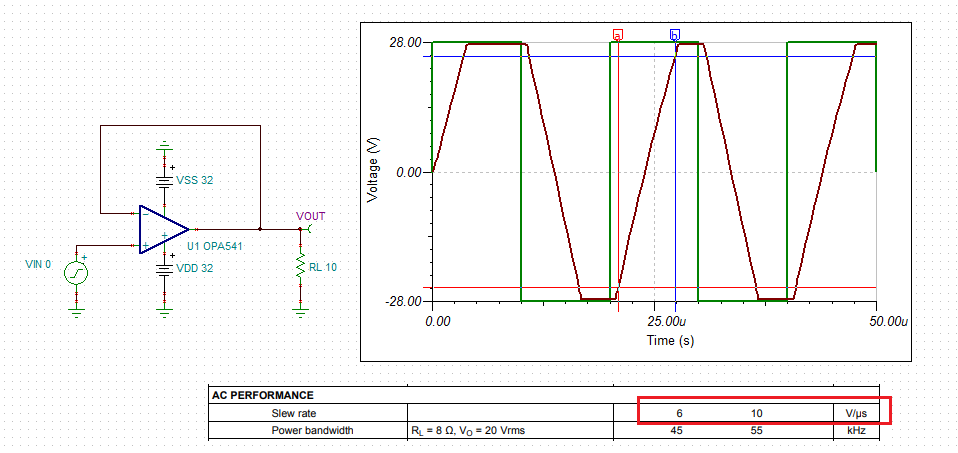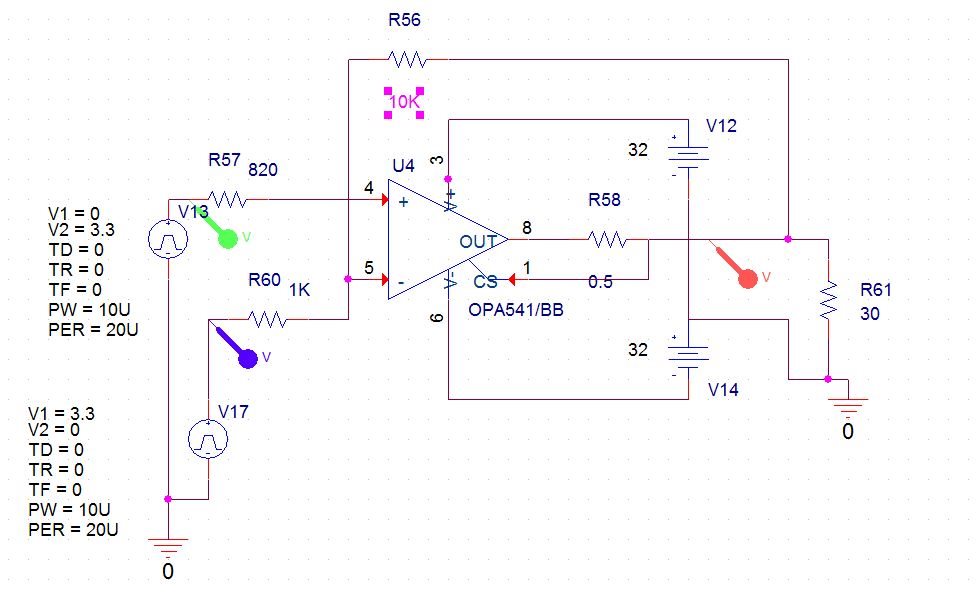Hi
I must generate an NRZ signal value betwween -28V and +28V
Outpur current must be as least 2.5 A
I 've choose an OPA541 in TO220 package I "ve powered it under +32/-32 V
It works in additional mode (signal Input + is upon phase signal pin -)
It works but
My need is to have square with period of 20us (10us 28V and 10us -28V)
It seems this model is too limit in bandwith (I obtain nearly an triangle...))
So could you confirm me I m' out specs ? if I lower the gain can I have more bandwith ?
More have you another component to propose to me?
Thanks
Regards





